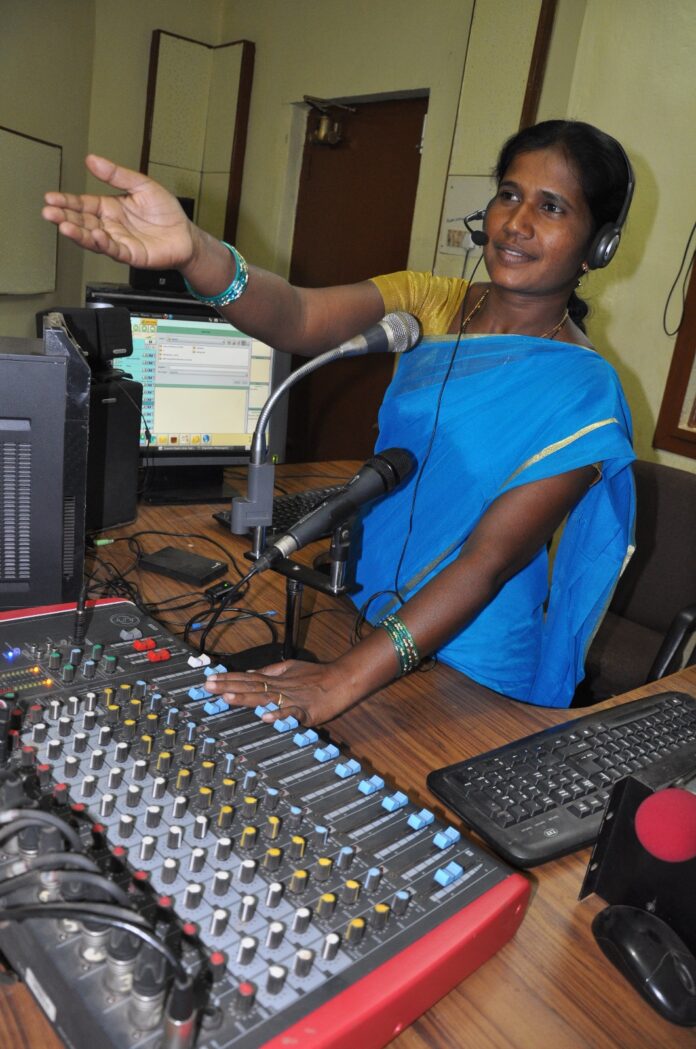Mohini Kapoor, TwoCircles.net
Hyderabad: Not long ago, in a corner of southern India where caste and gender boundaries still hold strong, the idea of Dalit women speaking boldly into microphones would have seemed improbable. Yet today, in over 150 villages across Telangana, their voices crackle through the air — telling stories, asking questions and singing songs that have long been pushed to the margins.
“This is not just a radio. It is our voice. We talk about our gods, our food, our problems. Before this, nobody listened,” said Naligindla Narsamma, Sangham Radio’s lead producer and anchor.
Launched in 2008, Sangham is India’s first community radio station run entirely by rural Dalit women. Based in Sangareddy, Telangana, it began as an initiative by the Deccan Development Society (DDS), a grassroots organisation working with women farmers.
Today, it stands as a rare example of local media built by and for marginalised voices — especially in villages where the internet is patchy, electricity unpredictable and caste hierarchies persistent.
In Naligindla’s voice, traditional folklore blends with public health tips, farming know-how and open conversations about everything from menstruation to alcoholism to gender rights.
Now in her mid-40s, Naligindla still remembers how strange it all seemed in the beginning. In the early 2000s, the DDS organised a village meeting with All India Radio and UNESCO representatives.
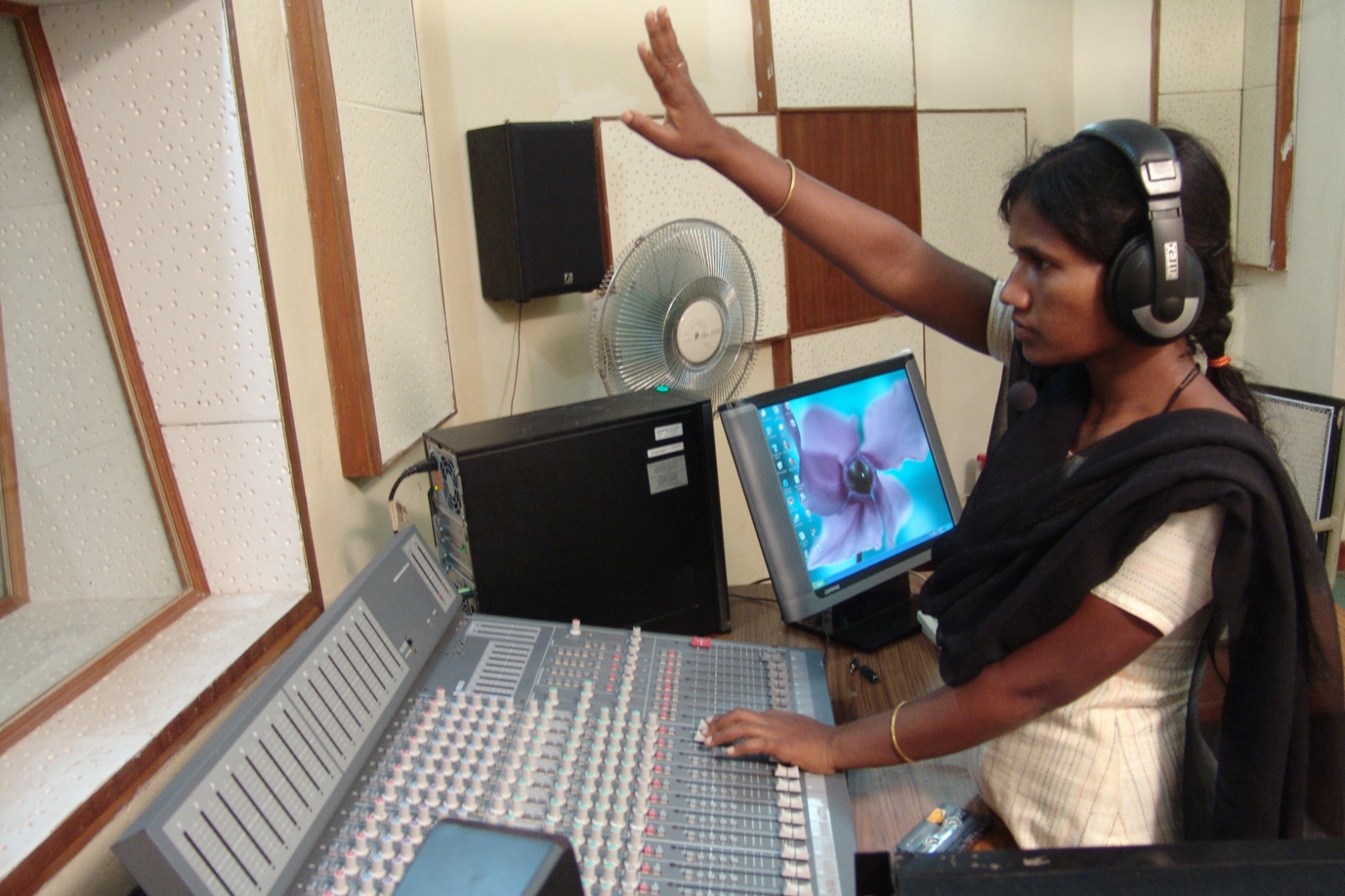
“They told us to speak on the radio. But how could we know if anyone heard us? We did not even own radios,” she said.
That early doubt soon turned into determination. With support from UNESCO, the DDS secured a transmitter, tower and a studio.
Naligindla, who had only studied till 10th grade, taught herself to record, edit and broadcast.
She was not alone. Other Dalit and marginalised women followed. Some walked long distances. Some brought their babies on their backs. They learned by doing, sometimes without even knowing how to read manuals.
“We did not know English. We were scared of machines. But now, we do everything — reporting, editing, RJ-ing,” Naligindla said.
Across India, over 300 community radio stations are licensed by the Ministry of Information and Broadcasting. Most are linked to NGOs or academic institutions. Very few are run entirely by women — and fewer still by Dalit women from remote areas.
Empowerment in every frequency
With a broadcast range of about 40 kilometers, Sangham Radio now reaches more than 150 villages. Its team is small — just two full-time staffers and a handful of volunteers — but its message is far-reaching.
“Villagers visit once a month to share their concerns. Some record their own segments and bring them to us,” said Naligindla.
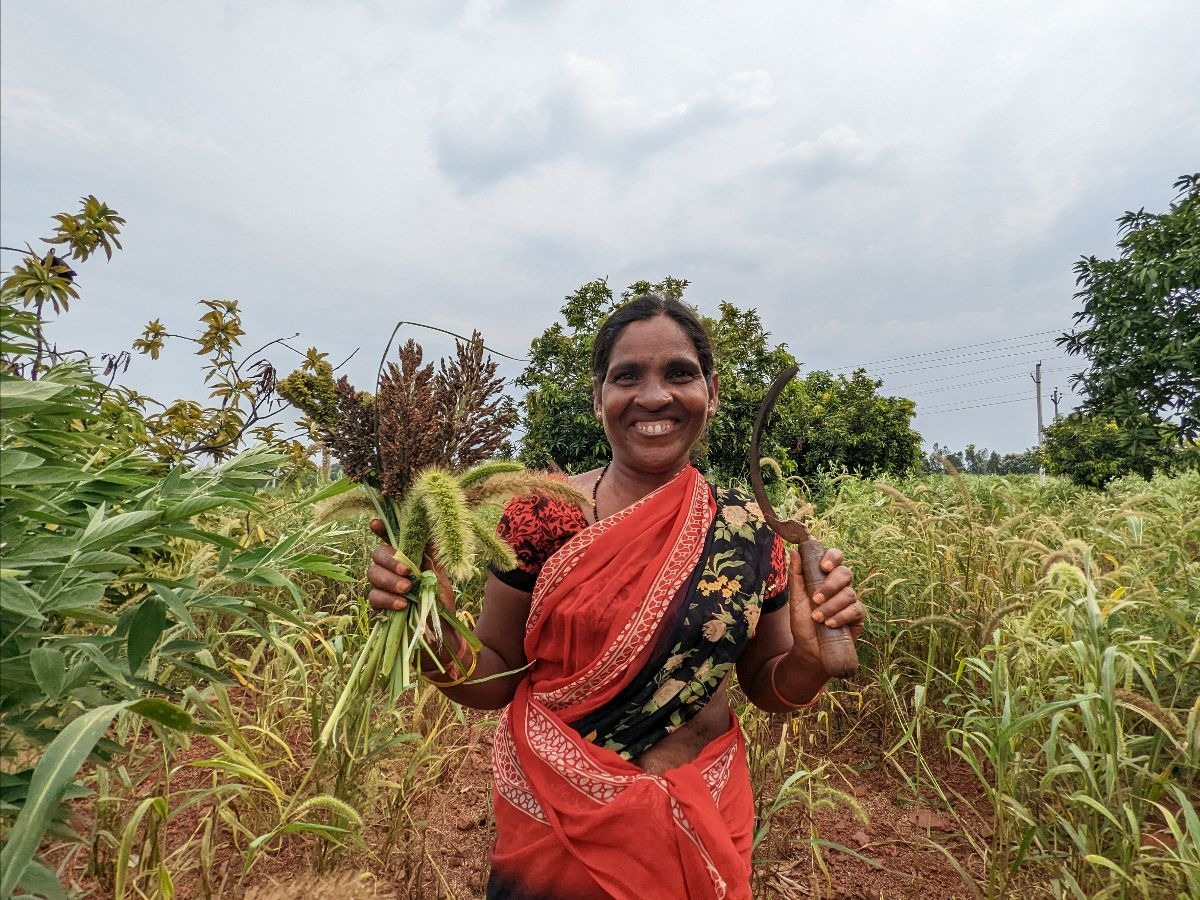
Sunita, a farmer from Bilalpur, heard the radio through her local farmers’ association.
“They told us that women have equal rights as men. I never knew that before. Now, we talk openly about rights and problems. Earlier, we did not even have a way to speak,” she said.
Lakshmama, another villager, contributes folk songs. Her father supported DDS’s early work, and she remembers singing at village festivals. “Now, young girls from our village are learning too. The radio keeps our traditions alive,” she said.
Each day, the station airs deeply local content: market prices, farming updates, seasonal rituals, songs and health programs.
Much of this knowledge is not found in textbooks. “We have over 2,000 recordings of songs and stories that are not written down anywhere else,” Naligindla said.
On summer nights, when farm work slows down, villagers gather to listen to broadcasts about local deities like Yellamma and Pocha Amma. “It becomes a shared experience — part entertainment, part education,” she added.
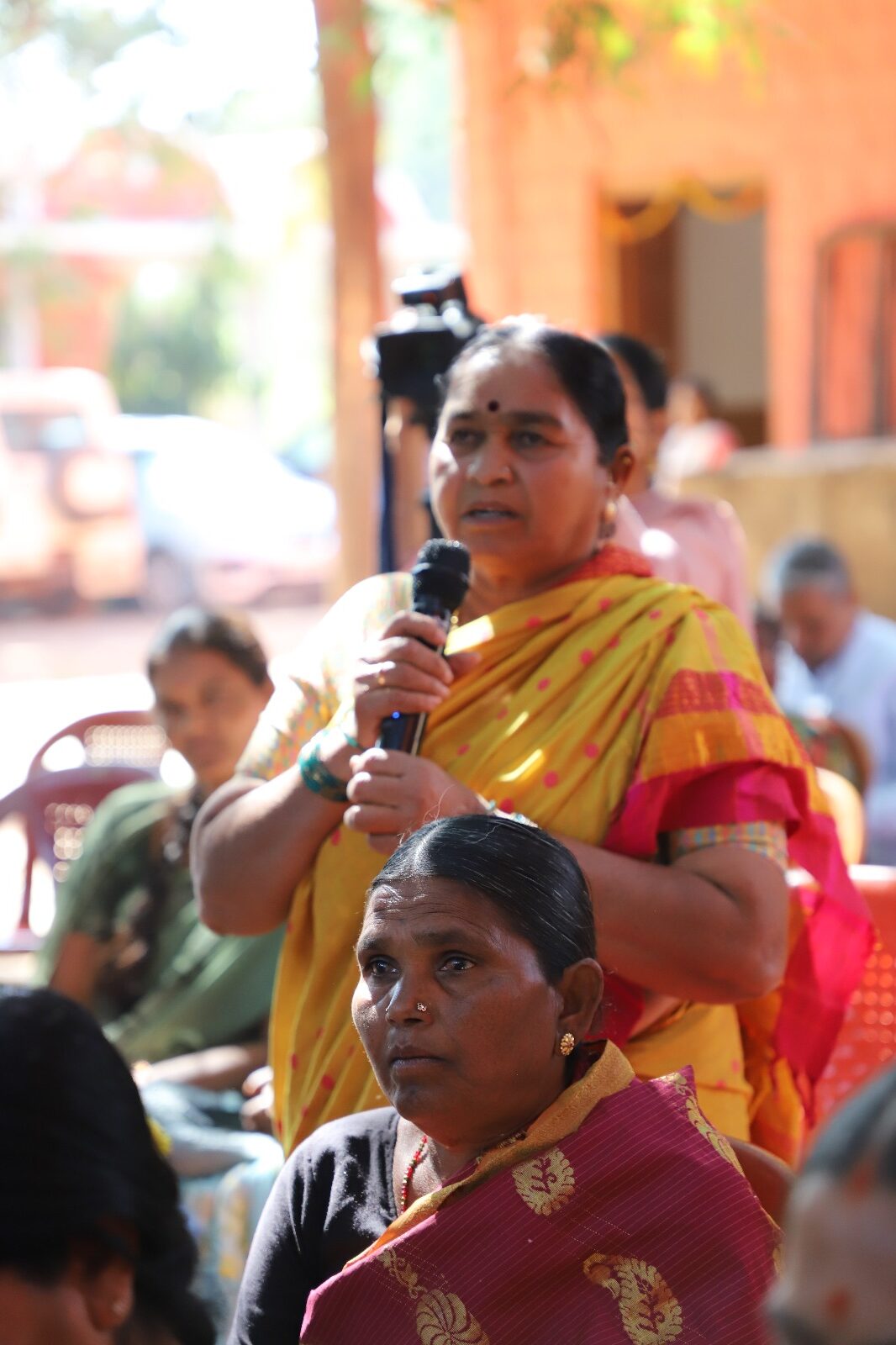
But the station is also a space for truth-telling and taboo-breaking. “We talk about women’s health, rights, periods… things that are usually whispered, not said aloud,” said Naligindla. “At first, people were scared. Some refused to be recorded. I had to coax them with tea and snacks.”
Over time, the station earned the community’s trust.
Pushing through bureaucracy
Though villagers embraced the radio early on, the government was slower to recognise it. For nearly 10 years, Sangham Radio operated without a full license. Naligindla and her team travelled across India, attending policy meetings and media forums.
“We would carry clips of our programs and tell them, ‘This is our village, this is our work,’” she said.
Even today, the station scrapes by on a monthly budget of Rs 15,000 – Rs 20,000 (about $180–$240). Much of the equipment is outdated. Repairs are done in-house, often using recycled parts.
“We have not received much support from higher authorities. But we continue. This is our life,” Naligindla said.
Staying relevant in digital world
With more young people turning to smartphones, the team at Sangham Radio is adapting. They are experimenting with interactive voice response (IVR) systems, allowing listeners to dial in and hear pre-recorded shows on demand.
“We want youth to hear our voices. Right now, they are glued to their phones and private songs. If we can bring our content to mobile, they might listen,” said Naligindla.
They have also started informally teaching local youth how to record and edit audio — laying the groundwork for a future generation of community journalists.
“It is our way of ensuring this does not die with us,” she said.
But getting young people to invest deeply remains a challenge. “Some come here not to learn but to complete their PhDs or films. We need people who want to stay,” she said, half-laughing.
Though the station does not track outcomes in charts and graphs, its impact is visible in the way people now approach them — not as outsiders, but as a trusted part of the village.
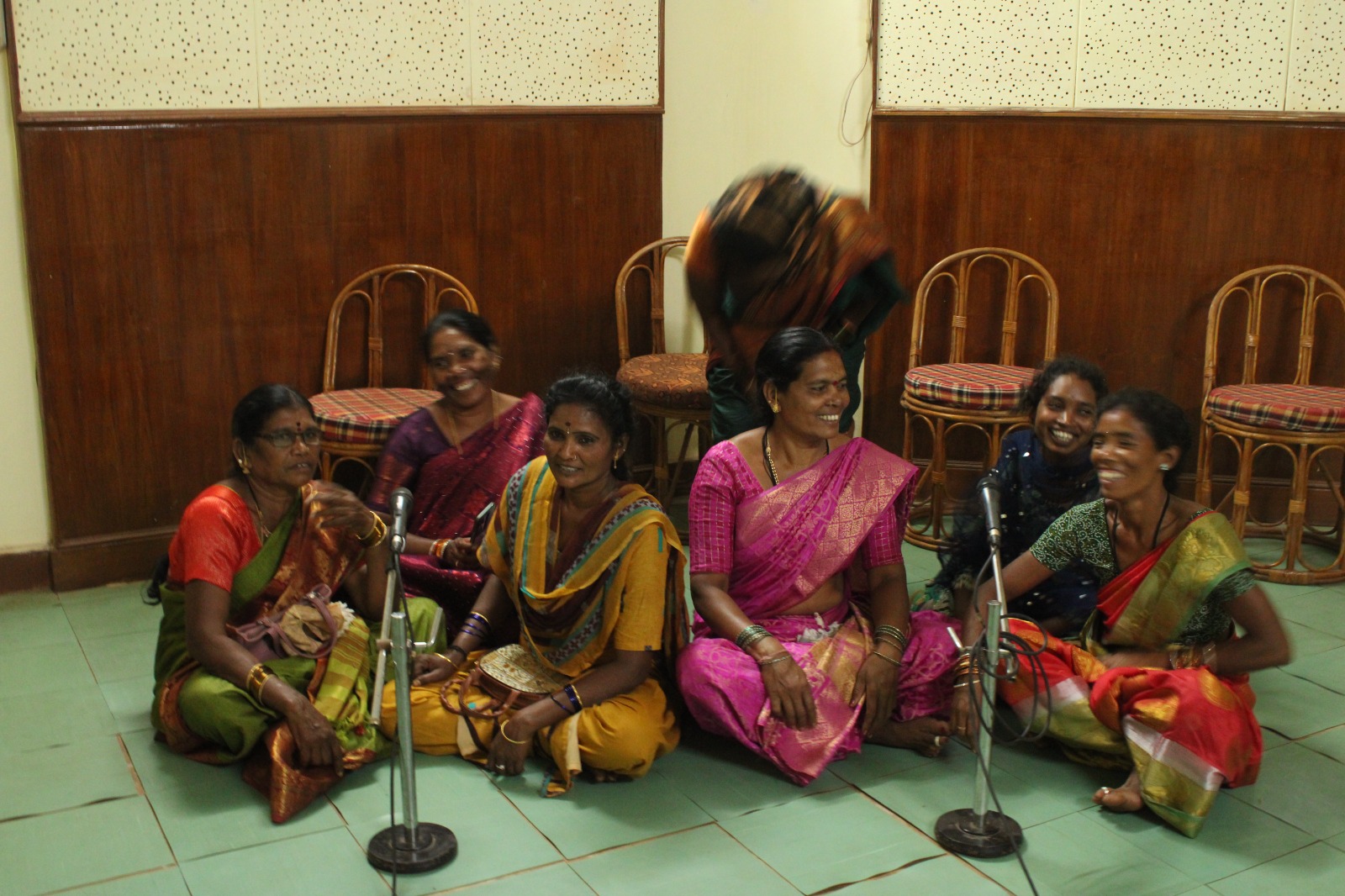
“People call us with their problems. Sometimes, they need advice. Sometimes, they just need someone to listen. That is a success too,” Naligindla said.
Lakshmama agreed. “The radio is like a bird’s nest. It keeps hope alive. Even when we do not have electricity, even when the roads are broken, the radio is there,” she said.
Yet in places like M.M. Pandu, power remains a problem. Many households share radios or rely on word-of-mouth to keep up with broadcasts.
“We need more funding to stay alive. We are trying our best,” Naligindla said.
The road ahead
For Naligindla and her team, the next five years are critical. They aim to digitise their archives, expand their reach via mobile phones and train more rural women in the art of radio storytelling.
But their mission is more than technical. It is emotional, cultural and personal.
“Our stories matter. We are not just voices on the radio. We are the soul of this village,” Naligindla concluded.

